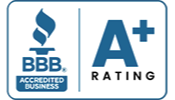Growth and Income Opportunities of Corporate Bond Investments
With rising global market uncertainties and volatility, retirees are turning to stable, income-generating investments that offer growth potential. Corporate bonds have become a popular choice for individuals approaching retirement. A Federal Reserve study states that corporate bonds make up around 25% of all fixed-income investments in retirement portfolios, highlighting their significance in retirement planning.
Unlike stocks, which can be subject to market fluctuations, corporate bonds offer more predictable returns while helping to preserve capital—making them a valuable component of any retirement strategy. In this blog, we will explore how corporate bonds work, their growth and income opportunities, and their critical role in creating a well-diversified portfolio designed to support long-term financial security in retirement.
What Are Corporate Bonds?
Corporate bonds are debt securities issued by companies to raise capital. When investors purchase corporate bonds, they essentially lend money to the issuing company in exchange for regular interest payments, also known as coupon payments, over a fixed period. Upon maturity, the bondholder is repaid the principal amount, or face value, of the bond.
Corporate bonds are generally classified into two categories based on their credit rating:
- Investment-grade bonds: Issued by companies with higher credit ratings, these bonds typically offer lower yields but have less default risk.
- High-yield bonds (junk bonds): These bonds offer higher yields to compensate for the greater risk of default, as companies issue them with lower credit ratings.
In the U.S., corporate bonds are rated by three major ratings agencies: Standard & Poor’s (S&P), Moody’s, and Fitch. The highest-quality bonds are rated Aaa by Moody’s and AAA by S&P and Fitch, with ratings declining down the scale for bonds with higher default risks.
Both types of corporate bonds offer opportunities for growth and income, depending on the investor’s risk tolerance and financial goals. Now, let’s take a closer look at how corporate bonds can benefit your retirement planning efforts.
 Why Consider Corporate Bonds in Retirement Planning?
Why Consider Corporate Bonds in Retirement Planning?
Corporate bonds can be an attractive option for investors approaching retirement because they generate consistent income while preserving capital. Below are key reasons why corporate bonds can be a valuable component of a retirement portfolio.
1. Reliable Income Stream Potential
One of the greatest benefits of corporate bonds is their ability to generate a steady income stream. As of September 2024, U.S. corporate bond issuance reached $1,567.4 billion. This robust figure demonstrates the ongoing demand for corporate bonds as a reliable income source. Bonds pay interest semi-annually, making them an appealing choice for investors seeking predictable cash flow to cover living expenses, healthcare costs, and other retirement needs.
Investors can match bond maturity dates with their anticipated future expenses, helping to create a well-organized income schedule. Additionally, bondholders have a claim on the company’s assets in case of default, making corporate bonds a relatively safer alternative to equities for income generation. Working with a fiduciary advisor can be beneficial in seeing if corporate bonds are the right investment for you.
2. Capital Preservation Potential
While equities can be volatile, corporate bonds are more stable, making them a preferred choice for those looking to preserve their capital. Investment-grade bonds offer lower risk than stocks while still providing returns that exceed the income from traditional savings accounts or U.S. Treasuries. For high-net-worth individuals (HNWIs), this balance between safety and yield is crucial for maintaining financial security in retirement.
3. Potential Diversification Benefits
Diversification is key to minimizing risk in any investment portfolio, especially as retirement approaches. By adding corporate bonds to a portfolio that includes equities, real estate, and other asset classes, investors can help reduce overall risk and improve returns. Corporate bonds often hold their value better than equities during stock market downturns, providing a buffer against losses.
Which Investment Bond is Right for You? 
Choosing the right type of corporate bond—whether investment-grade or high-yield—requires careful consideration of several factors. Every investor’s situation is unique, and the ideal bond strategy will vary based on individual preferences, market conditions, and retirement planning goals. Understanding the trade-offs between safety, yield, and potential risk is crucial when deciding which bond type aligns best with your financial strategy.
1. Investment-Grade Bonds: Stability and Lower Risk Potential
Investment-grade corporate bonds may be the better option for investors prioritizing capital preservation and steady income for retirement. Companies issue these bonds with strong financial health and are less likely to default, making them a safer option for conservative investors. Investment-grade bonds typically yield less than high-yield bonds, but they offer more stability, which is particularly valuable for individuals looking to preserve wealth during retirement.
2. High-Yield Bonds: Greater Income Potential with Higher Risk
For investors comfortable taking on more risk in exchange for higher income, high-yield bonds, also known as “junk bonds,” can be an appealing option. Companies issue these bonds with lower credit ratings. This means they have a higher likelihood of default than investment-grade bonds. High-yield bonds offer significantly higher interest payments to compensate for increased risk, making them attractive to investors seeking greater cash flow.
Investors should also consider working with a fiduciary advisor to evaluate whether high-yield bonds suit their financial goals and risk tolerance. A well-constructed bond strategy tailored to an individual’s retirement needs can help capture higher yields while mitigating the potential downsides of default and market volatility.
 Corporate Bonds and Inflation
Corporate Bonds and Inflation
Inflation is an important consideration for any investor, as it can erode the purchasing power of fixed-income investments. When inflation rises, the bond return decreases, making it harder to keep pace with rising costs. However, some corporate bonds come with inflation protection. For example, inflation-linked bonds adjust their coupon payments based on changes in the Consumer Price Index (CPI). This helps investors maintain their purchasing power.
It’s important to note that corporate bonds do not offer the same level of inflation protection as inflation-indexed government bonds. Selecting bonds with shorter maturities could help mitigate the impact of inflation on bond values. Before making investment decisions, consulting with an advisor can help determine whether the investment aligns with your financial goals, risk tolerance, and overall retirement strategy.
How to Buy a Corporate Bond
When a company initially issues a bond, it is typically purchased by institutional investors or large investors with significant capital. These investors can later sell the bond in the public bond market, where individual investors and others can buy it. Purchasing a bond is relatively straightforward. Major brokerage firms provide easy access to corporate bonds.
To buy one, you’ll simply need to select the bond issuer and the desired bond maturity, as many companies offer multiple series of bonds with varying terms. Once bonds are on the market, their prices can fluctuate. Bonds trading above their original issue price are known as premium bonds, while those trading below are called discount bonds. Several factors can influence these price movements:
- Credit rating changes: If a rating agency downgrades a company, the value of its bonds may decrease.
- Company performance: If the issuing company’s business faces difficulties, leading investors to question its ability to repay its debts, the bond prices may drop.
- Interest rate changes: Bond prices move inversely to interest rates. When interest rates rise, the price of existing bonds generally falls. Conversely, when rates decline, bond prices tend to rise.
Understanding these dynamics is essential when navigating the bond market and selecting the right bonds for your investment portfolio.
How Agemy Financial Strategies Can Help 
At Agemy Financial Strategies, our mission is to help you confidently navigate the complexities of retirement planning. With decades of experience and a team of skilled fiduciary advisors, we are dedicated to equipping you with the knowledge and strategies necessary to build a resilient and tailored retirement plan. Here’s how we can support you:
- Balancing Growth and Income: We craft personalized strategies to help you achieve the right mix of growth and income for your retirement goals.
- Minimizing Risk Through Diversification: By diversifying your portfolio, we aim to help reduce risk while optimizing returns.
- Ongoing Monitoring and Adjustments: We continuously monitor your portfolio and make necessary adjustments to help align with your financial objectives.
Whether you prefer the stability of investment-grade bonds or the higher income potential of high-yield bonds, our fiduciary advisors are here to guide you in selecting the right bond mix to achieve your financial goals. Explore our full list of service offerings here.
Final Thoughts
Corporate bond investments offer a valuable combination of growth, income, and capital preservation for HNWIs nearing retirement. By providing steady interest payments and enhancing portfolio diversification, they can play a critical role in securing long-term financial stability.
If you’re ready to explore how corporate bonds can enhance your retirement strategy, Agemy Financial Strategies is here to help. Our experienced fiduciary advisors will work with you to optimize your financial plan and help ensure lasting security.
Contact us today to take the next step toward a balanced and secure financial future.
Disclaimer: The information provided in this blog is for educational purposes only and should not be considered as specific investment advice. While we aim to provide valuable insights, every individual’s financial situation is unique, and changes to your investment portfolio or financial strategies should only be made after consulting with a qualified financial advisor. We encourage you to contact our team before making any investment decisions to help ensure they align with your personal goals and risk tolerance.













Leave a Reply
Want to join the discussion?Feel free to contribute!